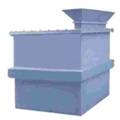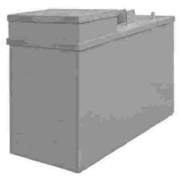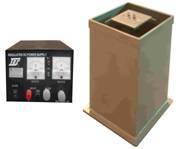

 Company Profile Company Profile
 Organisation Organisation

 Potable Water System Potable Water System
 Water Disinfection System Water Disinfection System
 Chlorine Dioxide Generating System Chlorine Dioxide Generating System
 Sodium Hypochlorite Generating System Sodium Hypochlorite Generating System
 Iron and Manganese Treatment Iron and Manganese Treatment

 Consultancy Services Consultancy Services
 Engineering Services Engineering Services
 Water Management Contract Water Management Contract
 Laboratory Services Laboratory Services

 Wastewater Treatments Wastewater Treatments
 Biofilm Fluidized Bed (BFB) Biofilm Fluidized Bed (BFB)
 Free-Radical Technologies Free-Radical Technologies
 Water Treatments Water Treatments
 Eco-Restoration Eco-Restoration



|

Chlorine Dioxide Generating System for Drinking Water Treatment
Enhanced user-friendly systems that set a new trend in disinfection of drinking water.
Chlorine dioxide CIO2 is an eco-friendly oxidant and disinfectant for use in many industries. For treatment of drinking water, it is a stronger, better and healthier disinfectant than chlorine and chloramines in many applications. As CIO2 is difficult to transport, because of its explosiveness at high concentration and instability, it has to be produced on site for field application.
Why use CIO2 for treatment of drinking water?
- A fast and efficient biocide, effective even at low concentration of 0.1 ppm and at high pH
- CIO2 can inactivate cysts of parasitic protozoa such as Cryptosporidium and Giardia
- Best for treatment of surface water with high organic matters, as it will not form DBP such as Trihalomethanes (THM) and Haloacetic acids (HAAs), and does not oxidize bromide to bromine
- Most effective in treating taste and odor problems
- Ideal for ground water containing iron as manganese, as CIO2 oxidizes iron and manganese, and some chlorine resistant organics
What make CIO2 an excellent disinfectant?
- CIO2 remains gaseous in solution and is uncharged, and can penetrate cell wall of microorganisms and attack the cell content.
- Bacteria surface is negatively charged and it does not repel CIO2. CIO2 can penetrate into the cell and damage the amino acid and RNA.
- CIO2 reacts with peptone in the viral cells, and kill them through prevention of protein formation.
- CIO2 is one of the few disinfectants that can inactivate protozoa like Giardia lamblia and Cryptosporidium
- Microorganisms cannot build up any resistance against CIO2.
KYTOLAND CIO2 Generating System for Disinfection of Drinking Water
Features
- High performance: Purity of CIO2 is higher than those from similar equipment available in the market
- User friendly: Easy to use and maintain, needs only basic scientific knowledge to operate and maintain.
- All materials used are designed to withstand corrosiveness and high temperature
- Come with alarm system to alert operators at low chemical level or low water flow; automatic shut-off to insure safety of equipment (optional)
- Built-in devices to monitor residual chlorine in treated water and adjust dosing automatically to ensure effective disinfection (optional)
Models for Treatment of Drinking Water
Model KCE:
- Technology: Electrolysis using salts
- Purity: Cocktail of CIO2 (15-20%), chlorine gas, ozone and hydrogen peroxide
- Capacity (g/h):10, 20, 50, 100, 200, 300, up to 20000
- Advantages: V. low operating cost (1.3 g salt + 0.006 kw-h to produce 1g effective Cl2)
- Applications: More suitable for continuous operation, e.g. drinking water, hospital, swimming pool, recycled water etc.
|

|
Model KCB
- Technology: Chemical process using sodium chlorite and hydrochloric acid
- Purity: High, 95% or more
- Capacity (g/h): 50,100, 200, 500, and up to 10,000
- Advantage: High purity of CIO2
- Applications: Most suitable for small and medium size setup, such as drinking water plants from surface and ground water, food processing, healthcare and industrial water
|

|
Model KCD
- Technology: Chemical process using sodium chlorate and hydrochloric acid
- Purity: Mixture of CIO2 (>50%) and chlorine gas
- Capacity (g/h): 100, 200, 500, 1000 and up to 20,000
- Advantage: Low operating cost
- Applications: Drinking water, sewage water, recycled water, hospital, Cooling water
|

|
Sodium Hypochlorite Generating System for Drinking Water Disinfection
Ideal chlorination system for disinfection of drinking water from ground water
Chlorination has been widely used in eliminating pathogens causing waterborne diseases since the early twentieth century. Among the 3 forms of chlorination, sodium hypochlorite (NaClO) solution is preferred over chlorine gas (Cl2) and dry calcium hypochlorite [Ca(ClO)2] because it is less hazardous and easier to handle. However, NaClO has short shelf-life and its supply is usually limited. These problems have been overcome - thanks to the development of sodium hypochlorite generating systems.
Why use sodium hypochlorite for disinfection of drinking water?
- Highly effective against most pathogens
- Long residual effect to protect against re-contaminations and reduce bio-film growth in the distribution system
- Less hazardous and easier to handle than chlorine gas and hence lower skill requirement for handling
- Unlike calcium hypochlorite, no precipitated solids in solution and hence avoiding complicated chemical feeding
- More cost effective than chlorine dioxide
|
| |
Sodium Hypochlorite Generating System
- Technology: Electrolysis of brine solution made of industrial salt
NaCl + H2O -----> NaClO + H2
- Operating cost: Very low; production of 1 g of effective chlorine consumes only 4 g of industrial salt and 0.004 kw electricity
- Electrode: Long life-span anode
- Automation: Built-in devices to monitor residual chlorine in treated water and adjust dosing automatically to ensure effective disinfection (optional)
- Concentration of product: 8% effective chlorine
- Capacity: Many models available, with wide range of capacity
- Small (g/h): 2, 5, 10, 25, 50, 100, 150, 200, 300, 400, 500, 750
- Large (kg/h): 1, 1.5, 2, 3, 4, 5, 10, 15, 20, 25, 35
- Applications: Drinking water especially from ground water, hospital wastewater, recycled water, industrial water, swimming pool, bleaching of paper pulp and fiber, aquaculture, livestock farm etc.
Sodium Hypochlorite Batch Production System
- Technology: Electrolysis of brine solution made of industrial salt
NaCl + H2O ---- > NaClO + H2
- Operating cost: Very low; production of 25 L (187g effective chlorine) of NaClO solution requires only 1 kg of industrial salt and 1 kw of electricity
- Concentration of product: 7,500 mg/L
- Capacity: 187 g effective chlorine per batch (= 25 L of NaClO solution with 7.5 g/L effective chlorine), each batch takes 8 hours
- Operation: Mix 1 kg of salt with 24 L of water in reaction chamber, and insert electrode into the chamber. Switch on power and NaClO solution is ready for use after 8 hours.
- Applications: Drinking water especially from ground water, hospital wastewater, recycled water, industrial water, swimming pool, bleaching of paper pulp and fiber, aquaculture, livestock farm etc
Back to Top |
 |




